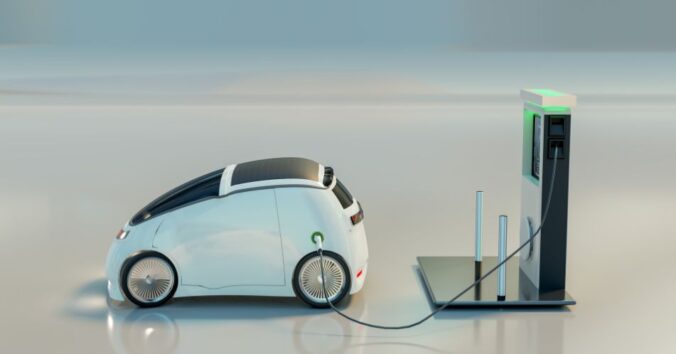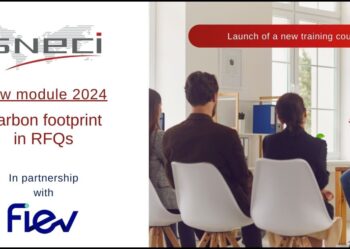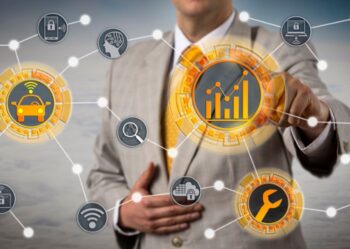Recycling electric batteries in Europe, a major challenge

The recycling of batteries for electric vehicles has long been an obstacle to their large-scale development.
Often considered as heavy, expensive, not offering enough autonomy and not allowing easy recharging, innovation to anticipate tomorrow’s challenges has been accelerating, but the ability to recycle these batteries on a large scale remains the crystallization point.
Battery recycling represents a major challenge for the ecological transition and electric mobility, since without recycling and given the awareness of users regarding environmental impact and regulations by 2035. Many manufacturers have already stopped producing diesel-powered vehicles.
In order for Europe to become a major player in the battery industry, independently of the gigafactories that enable its production, it must anticipate and organize the recycling sector for economic, strategic and environmental reasons.
A dependence on battery production:
It is important to understand one thing, Europe does not have the resources to produce batteries in the required quantities, in fact, out of the 400 kilograms of the “battery pack” of a vehicle, 1/4 is made of metals that Europe does not possess or even very little, moreover, Europe would need 5x more cobalt and 18x more lithium by 2030 to produce electric vehicles on a large scale.
As a result, Europe will quickly find itself dependent on certain metals that are essential for the manufacture of batteries for electric vehicles and is now counting on the recycling of used batteries and the circular economy to create its own metal deposits.
Lithium and the challenge of 70% recycling:
The European regulation is ambitious since it provides for a better understanding of the life cycle of a battery, that the recycling yield should be 65% from 2025 and up to 70% in 2030.
Each metal will have a specific recycling rate to compensate for the much feared potential shortages, such as for lithium, which will have to be recycled at 35% and then 70%, as well as copper.
For nickel and cobalt, two metals that Europe does not have in its subsoil, there is talk of a 90% recycling rate within four years.
But the European Parliament requires more effort from the industry in addition to recycling metals, in fact, Brussels requires that these recycled materials are gradually incorporated into batteries from 2030.
The precision is such that 4% of recycled lithium from 2030 will have to be incorporated into batteries to rise to 10% in 2035.
The timetable is tight because batteries require very pure products, which explains why the industry is finding it difficult to incorporate recycled metals. Innovations will have to appear quickly among recycling specialists to meet the challenges of the industry in terms of recycling.
Today, the main process used is pyrometallurgy. This process consists of heating the active part of the battery to recover a “blackmass”, i.e. a kind of huge metallic alloy.
The problem with this method is that it does not allow the collection of all the metals.
Many people are therefore turning to hydrometallurgy.
The future of recycling with Hydrometallurgy :
But what is hydrometallurgy? Hydrometallurgy is a metal extraction technique that includes a step where the metal is solubilized to allow its purification. It is a liquid metal treatment process, hence the name hydrometallurgy.
As the battery requires pure metals, this purification process consists in putting the different metals contained in an ore or a concentrate into solution in order to separate them for recovery.
Typical hydrometallurgy is composed of the following operations
- leaching or dissolution: putting the different metals into solution;
- purification: separation of the different metals/constituents between them;
- electrolysis: recovery of the desired metal in metallic form.
Hydrometallurgical processes allow to obtain degrees of purity of metals that other metallurgical processes, such as pyrometallurgy, do not allow. They also have the advantage of being less energy-consuming, which is part of the ecological approach sought by the industry.
It should be noted that different metals treated by hydrometallurgy are mainly zinc, nickel, copper, cobalt, uranium, chromium, manganese, lithium…
However, hydrometallurgy is only profitable on a large scale and will require large investments amounting to hundreds of millions of euros.
100% recycled batteries: utopia or reality?
This is the ambition of industrialists: to be able to have a closed circuit for batteries, enabling new batteries to be produced from old ones. This has already been attempted with recycled lithium in the laboratory, but it is difficult to conduct conclusive tests, since it would take at least 2035 to have a large number of electric vehicles on the market and 2040 to have large volumes to recycle, explained Jean-Denis Curt, head of the Renault group’s circular economy division, in an interview.
Europe is also banking on mining to offset the potential shortage of metals to accompany the beginnings of its decarbonized energy system. In the long term, recycling could generate 40% to 75% of the strategic metal requirements for battery manufacturing and all green energy sources.
However, there are still many constraints linked to recycling, notably because the number of electric vehicles is still too marginal, and most of them have not yet reached the end of their life, leaving many open questions about the lifespan of batteries, their collection, their condition and their adaptability to recycling processes.
Furthermore, the lack of knowledge about the manufacture and composition of batteries is an obstacle to the efficiency of recycling processes, as the raw material markets are in turn subject to a certain financial volatility that makes investment in recycling uncertain.
For example, cobalt, considered the most profitable metal to recycle, saw its price triple between 2017 and 2019, then quadruple in a few months, before recovering, though not to its previous levels.
The increasing use of nickel, which will partially replace cobalt in the end, is forcing companies to switch from cobalt to nickel. Similar questions arise as to the “second life” of these batteries, which could then be used for stationary purposes.
What are the challenges for recycling?
The potential for battery recycling in the EU is significant and represents a triple challenge:
- Environmental: recycling allows energy savings compared to mining.
- Economic: the development of a recycling infrastructure and an industrial ecosystem linked to electricity storage will create jobs and value.
- Strategic: it will recover mineral resources that the EU does not mine on its own land, which can be fed directly back into EU industries.
Regulatory:
It is therefore necessary to give the European industry the regulatory and financial means to implement a closed-loop recycling and production chain when possible.
Depending on the different stages of the battery life cycle, regulations should impose precise standards to promote the sustainability of the European battery industry’s production model and its integration.
At the same time, it is important to consider how to promote environmentally and ethically sound mining and the production of secondary raw materials through recycling.
The processing of the latter must be facilitated by eco-design and eco-fabrication standards for batteries, allowing the standardization of manufacturing and therefore the recovery of materials at lower cost.
It will be necessary to rethink the targeting and accounting of recycling, to reorganize the collection systems by sector while avoiding distortions in the economic models, to set up the certification of the collection and recycling sectors and above all to accelerate the revision of the European directive on batteries in order to adapt it as quickly as possible to the industry’s new challenges. Currently, the recycling obligation for lithium-ion batteries is only 50%, while it is 90% for lead-acid batteries.
Life Cycle Carbon Footprint:
A life cycle assessment (LCA) approach should also be adopted to measure the carbon impact of batteries during their manufacture, use and end-of-life management. This would allow better control of imports with excessive carbon footprints, or exports of end-of-life batteries to countries that do not meet minimum environmental standards.
More generally, a systemic vision is needed to design a framework for an integrated European industrial ecosystem that allows for horizontal cooperation between companies, while being supported financially, legislatively and strategically by member states and the EC.
In summary, recycling has a bright future ahead of it as 3 million 100% electric vehicles were sold worldwide from January to May 2022, compared to 1.7 million over the same period in 2021 and 4.4 million for the whole of 2021 (source PwC).
10% of cars purchased in France in 2021 were electric. The most advanced country is Norway, with a 64.5% market share for electric vehicles.
The global fleet of plug-in hybrid and electric cars is expected to reach 145 million units by the end of the decade (source: International Energy Agency)
SNECI and the operational support of automotive manufacturers:
SNECI supports the European leader in sustainable automotive batteries through its industrialization
Our various solutions in business development and industrial performance at the international level allow us to support suppliers and manufacturers in different fields of expertise:
- In industrial performance, we provide our clients with the means to achieve operational excellence, by supporting them in their industrial projects or by training and coaching their teams. We also have in-depth expertise in assessing industrial companies and implementing best practices in quality, purchasing and logistics.
- In business development, our team partners with suppliers who are expanding into new regions or seeking to acquire new customers by acting as an extension of their sales, project, quality and logistics teams. We also advise companies on their partnership and acquisition strategy.
If you would like our team of over 70 years of experience in the automotive industry, with 450 experts worldwide, please contact Laura by email at laura@sneci.com or directly via the contact tab on our website.





